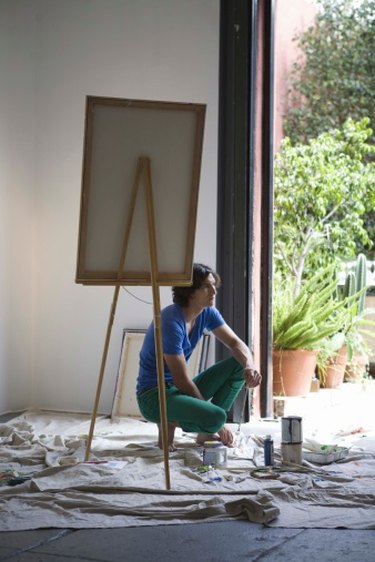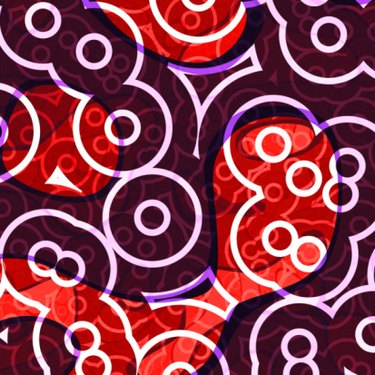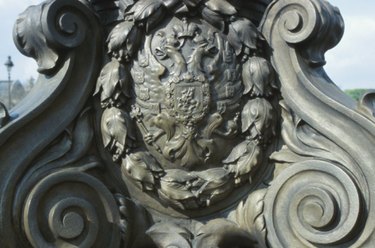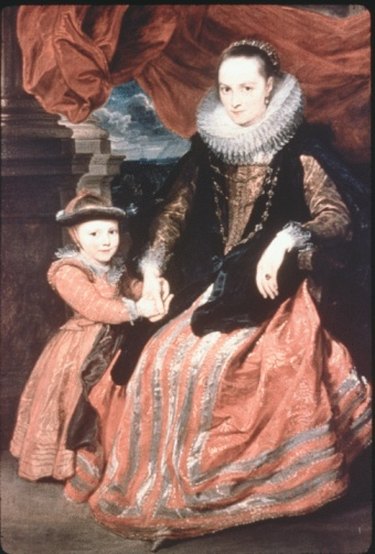
Art Deco, Art Nouveau and artistic work produced during the Edwardian and Victorian Eras can be found in architecture, paintings, home decor and crafts. Each has their own distinctive style, which varies from the colors utilized to the overall theme to the line formations. While they may have some overlapping similarities, they are mostly representative of the time period from which they originated.
Art Deco
Video of the Day

The Art Deco style lends itself to more geometrical shapes and lines that are organized in a repetitive manner. This particular style favors clean lines and a modern, sleek appearance. Art Deco originated in the 1920s and remained popular through the 1960s. It was inspired by the Cubism movement and played off of historical influences such as classic Greek, Roman, Babylonian, Aztec and Egyptian cultures. The Chrysler building in New York City is a modern day example of Art Deco architecture and was built between 1928 and 1930.
Video of the Day
Art Nouveau

Art Nouveau became popular during the last decade of the 1800s and into the first decade of the 1900s. The style is very organic as it uses elements found in nature such as flowers, insects and trees. It is distinguished from other artistic movements by its use of elongated, sensual and whiplash-like lines with sprouting vines and flowers to create a whimsical appearance. The Horta Museum in Brussels, Belgium is an example of Art Nouveau architecture.
Edwardian and Victorian Era

The Edwardian and Victorian periods mark a time when the British Empire was at its strongest under the rule of Queen Victoria and later her son, King Edward VII. The Victorian period took place between June 1837 and January 1901, followed by the Edwardian period, which lasted through the end of World War I. The artistic styles associated with these periods encompass the use of bright colors and emotional strokes to represent high society, prosperity and fashion finery. Many paintings produced during this time illustrated the English countryside (see Resources). A well-known Victorian-style architecture is the Manchester Town Hall in the United Kingdom.
Comparisons
While Art Deco and Art Nouveau may both borrow elements from nature, such as flowers and insects, the types of flowers and insects chosen is what differentiates Art Deco from Art Nouveau. For instance, Art Nouveau would use orchids, irises, dragonflies and spiders, while Art Deco would use camellias, roses and speedy animals such as leaping gazelles. Art Deco incorporates modern lines while Art Nouveau remains romantic and whimsical. Art work produced during the Edwardian and Victorian periods make use of bright and bold colors while the architecture embodies the Gothic revival. The political success and financial wealth of the British Empire is represented in all facets of Edwardian and Victorian art.